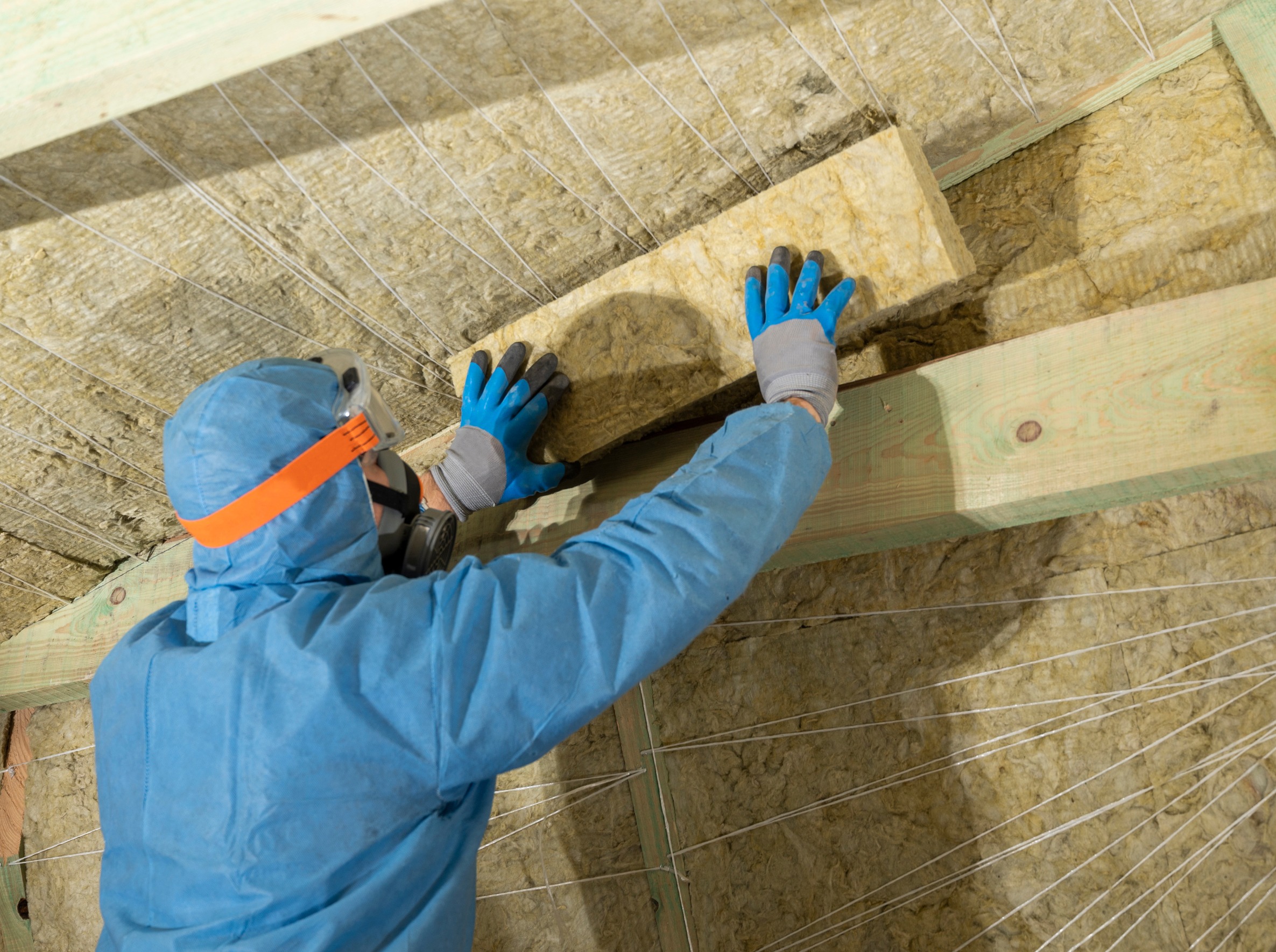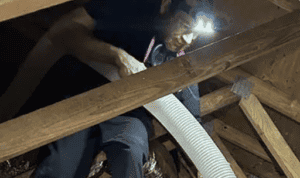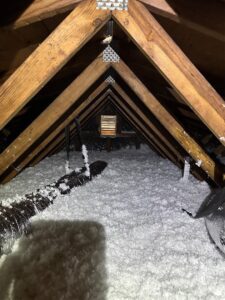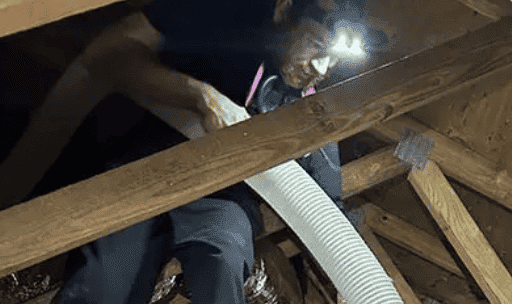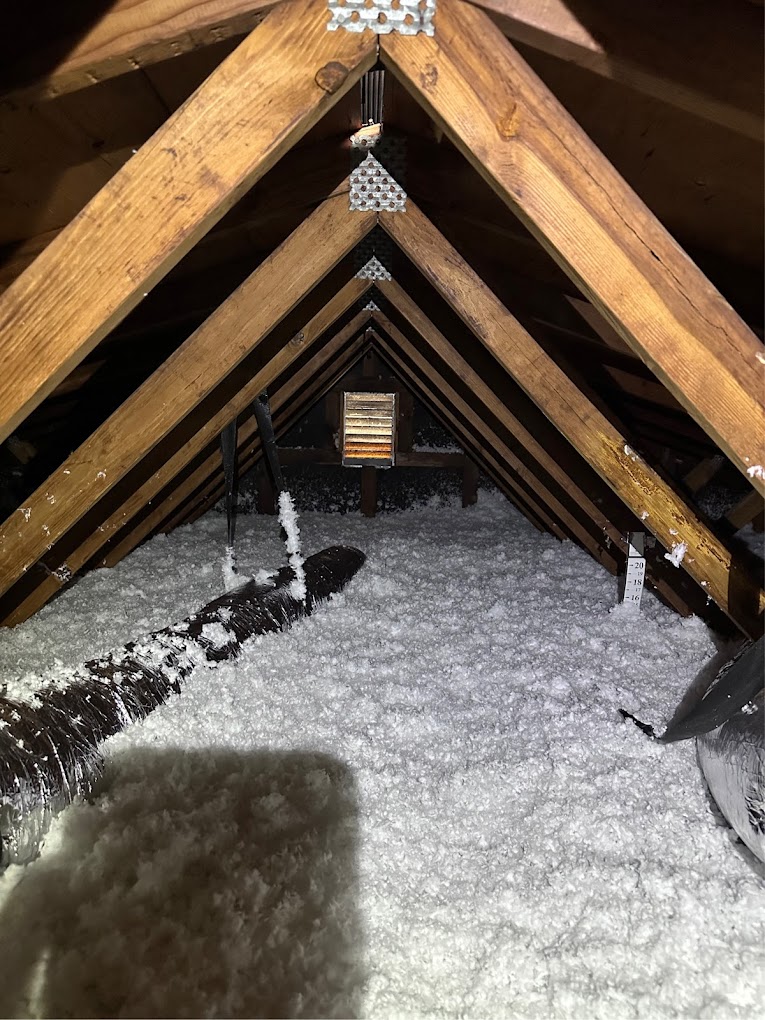Asbestos is a harmful mineral that has been commonly used as insulation in homes and buildings for many years. Its strength, heat resistance, and affordability made it a popular choice among builders. However, over time we have learned about its detrimental health effects and the importance of proper removal.
If you are a homeowner or building manager, it is crucial to understand if your insulation contains asbestos so you can take the necessary steps to ensure the safety of yourself and others.
In this blog post, we will discuss what asbestos insulation is, how to identify it in your home or building, and the dangers associated with exposure.
Understanding the Risks of Asbestos Insulation in Homes
Asbestos insulation poses a significant risk due to its microscopic fibers that can become airborne when the material is disturbed. When inhaled, these fibers can settle in the lungs, leading to serious health problems such as lung diseases and cancers, including mesothelioma.
The danger is particularly severe when the asbestos is friable, meaning it can be crumbled by hand pressure. If the asbestos-containing material is damaged or disturbed during renovations, repairs, or demolition, the risk of exposure becomes imminent.
It’s important to note that asbestos-related diseases often take many years to develop after exposure, making them difficult to detect in the early stages. Hence, knowing if your home contains asbestos insulation and managing it properly is key to reducing these health risks.
The History and Use of Asbestos in Insulation
Asbestos was long revered for its unique properties – it is flexible, resistant to heat, electricity, and corrosion, and provides excellent insulation. These attributes led to its widespread use in the construction industry, especially in insulation, from the late 19th century through the late 20th century.
During this period, it was commonly applied in pipe and boiler coverings, attic insulation, products to patch and seal joints, and even in the walls and roofs of residential and commercial buildings.
In the mid-20th century, however, the health implications of asbestos exposure began to surface. Despite these concerns, asbestos continued to be used in insulation due to the lack of cost-effective alternatives and its unmatched insulation capabilities.
It was only in the late 20th century, with the mounting evidence of the health risks, that regulations were put in place to limit its use. Despite these regulations, many buildings built before the 1980s are likely to contain asbestos insulation, making it crucial for homeowners and building managers to be aware of its potential presence and how to deal with it safely.
Identifying Potential Signs of Asbestos in Your Home’s Insulation
Recognizing asbestos in your home’s insulation can be challenging as it’s often mixed with other materials and cannot be identified by color or visual inspection alone. It typically resembles gray or white fibrous material, but can also be found in a variety of colors, including brown and blue.
The most common type used in home insulation is ‘Vermiculite,’ which is lightweight, pebble-like, shiny, and usually brown or gray. If your home was built before the 1980s and has vermiculite insulation, there’s a high chance it may contain asbestos.
Asbestos might also be present in older forms of insulation, including loose-fill insulation in attics or blown-in insulation in walls. It was commonly used for insulating around boilers, heating pipes, and fireplaces, so these are areas to check as well.
Remember, never attempt to handle or remove suspected asbestos-containing materials yourself. Instead, if you suspect your home’s insulation may contain asbestos, it’s crucial to get advice from a professional asbestos inspector or an accredited testing lab.
They have the necessary expertise and equipment to safely take samples and test them for asbestos content.
The Dangers of Asbestos Exposure and Its Impact on Health
Exposure to asbestos poses serious health risks. Inhaled asbestos fibers can become lodged in the tissues of the lungs, leading to inflammation and scarring. Over time, this can severely affect breathing and lead to various health conditions.
The most common diseases associated with asbestos exposure include Asbestosis, a chronic lung disease that causes shortness of breath, lung cancer, and Mesothelioma, a rare form of cancer that affects the lining of the lungs and abdomen.
It’s important to note that symptoms of these diseases may take many years, even decades, to appear after the initial exposure.
Moreover, those who smoke and are exposed to asbestos have a significantly higher risk of developing lung cancer. It’s also worth noting that there is no known safe level of asbestos exposure – even small amounts can result in health complications over time.
It underlines the importance of identifying and safely handling asbestos-containing materials in your home or building. Remember, effectively managing the potential risk of asbestos in your property is a crucial step in protecting the health and well-being of its inhabitants.
How to Properly Test for and Remove Asbestos from Your Home
If you suspect your home insulation contains asbestos, the first step is to have it tested. As asbestos fibers are not visible to the naked eye, the only surefire way to identify their presence is through professional testing.
Contact a recognized asbestos inspection service or an accredited lab to take samples of the suspected material. Remember, it is not recommended to collect the samples yourself due to the health risks associated with disturbing asbestos-containing materials.
Upon confirmation of asbestos presence, you must consider its safe removal. Asbestos abatement is a complex process that should be left to licensed professionals trained in handling hazardous materials.
They will have the appropriate equipment and knowledge to prevent contamination of the surrounding area and to dispose of the asbestos waste in accordance with environmental regulations.
During the removal process, all residents must vacate the property to minimize exposure. The abatement professionals will seal off the work area to prevent the spread of fibers and will implement measures to suppress dust. They will then carefully remove the asbestos-containing materials, clean the area thoroughly, and properly seal the asbestos waste for disposal.
After the removal, an independent air testing contractor should conduct an air clearance test to ensure all asbestos has been effectively removed and that the air quality of your home is safe. Only after receiving a clearance certificate should you re-enter your home.
Remember, dealing with asbestos is not a DIY job. The health risks associated with improper handling are far too great. Always consult with a professional for testing and removal of any suspected asbestos-containing materials.
Safer and More Economical Alternatives to Asbestos Insulation
In the wake of the recognized health risks associated with asbestos, numerous safer and more economical alternatives have emerged in the market. These materials provide effective insulation and contribute to healthier indoor air quality, energy efficiency, and overall home comfort.
1. Fiberglass: This is one of the most common types of insulation today. It’s made from fine glass fibers and is a cost-effective alternative to asbestos. It has excellent thermal and sound insulation properties and is fire resistant.
2. Cellulose: Composed of up to 85% recycled paper fiber, cellulose insulation is a green and economical choice. It offers superior thermal and acoustical insulation, is fire retardant, and can be installed using a wet or dry-spray method.
3. Mineral Wool: Also known as rock wool or slag wool, this type of insulation is made from slag, a by-product of steel production, or from natural, sustainable rock. It offers excellent fire resistance and sound absorption.
4. Spray Foam: This polyurethane-based material expands upon application, filling cavities and cracks to create a tight air seal. Though slightly more expensive, spray foam provides excellent thermal insulation and air-sealing properties.
5. Sheep’s Wool: A natural and renewable resource, sheep’s wool offers a unique combination of thermal insulation, humidity control, and air purification.
By choosing safer insulation materials, homeowners and building managers can protect the health of building occupants while improving energy efficiency and sustainability. Always consult insulation professionals to understand the best insulation options for your specific needs and circumstances.
In Conclusion
Asbestos is a widely used material in the construction industry for its durability and insulation properties. Despite its benefits, the health risks associated with asbestos exposure are immense and can lead to severe health problems, including lung diseases and cancers.
If you suspect your home or building contains asbestos insulation, it is vitally important to consult with a professional for testing and safe removal. Today, numerous safer and more economical alternatives to asbestos are available that not only provide effective insulation but also contribute to healthier indoor air quality, energy efficiency, and overall home comfort.
Understanding the dangers posed by asbestos and taking proactive measures to replace it with safer alternatives can have a significant impact on the health and safety of building occupants.
About Us
Are you looking to install or upgrade your home’s insulation in Tampa Bay, Sarasota, and surrounding areas? TLS Insulation Installers is where to call! A family-owned and operated business serving the residents of South-West Florida for the last 20 years, we are consistently recognized for providing the highest-quality insulation services in the region.
We set high standards for our work, ensure personalized attention to every project, and fulfill our customers’ needs down to the smallest detail.
At TLS Insulation, we understand how important energy efficiency and sustainability are for modern homeowners and strive to help them achieve them through world-class insulation.
Contact us today to get accurate cost estimates for your project and learn more about us.

